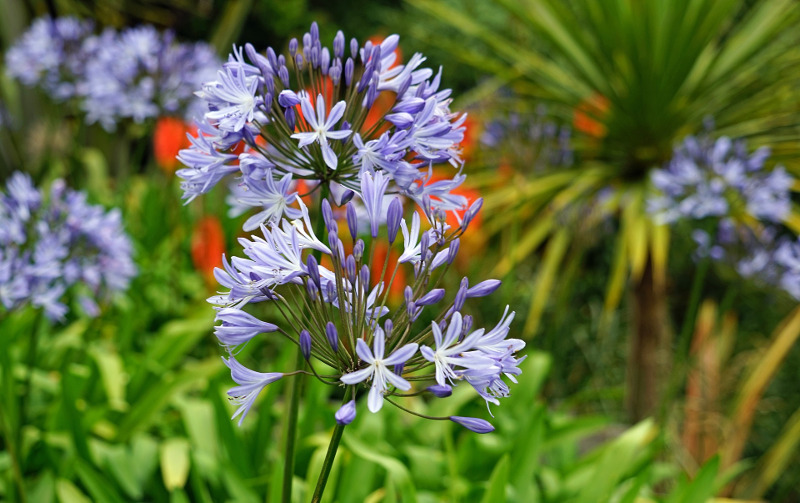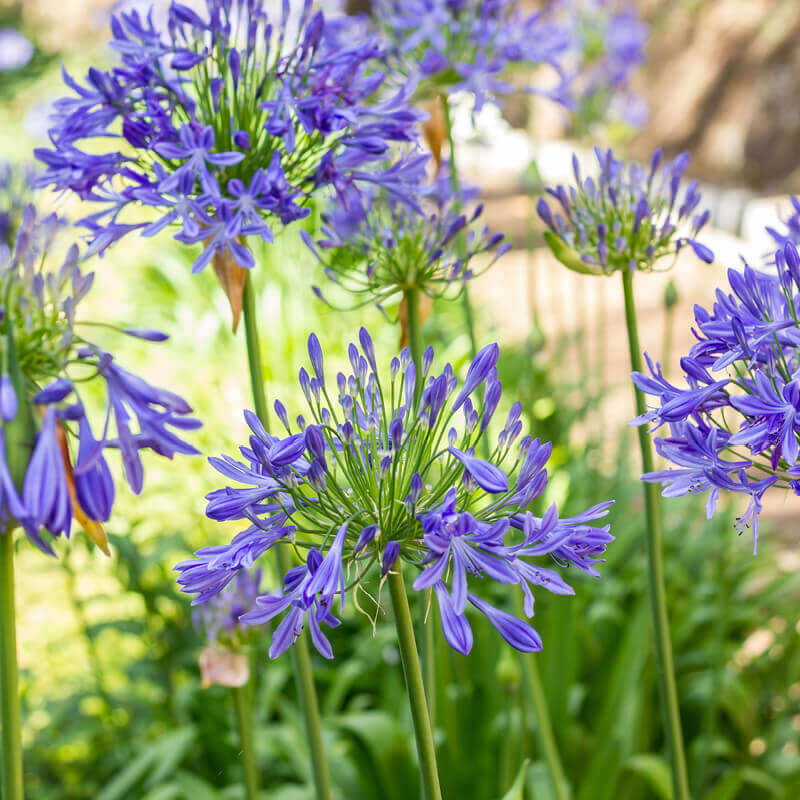Agapanthus Proliferation: Tips for Expanding Your Plant Collection
Agapanthus Proliferation: Tips for Expanding Your Plant Collection
Blog Article
Unleashing the Secret to Effective Agapanthus Cultivation: Idea for a Flourishing Yard
In the realm of gardening, cultivating agapanthus successfully requires a tactical method that includes numerous facets of plant care. By understanding the subtleties of agapanthus farming, one can create an atmosphere where these plants prosper and grow generously.
Growing Agapanthus: Best Practices
When planting Agapanthus, correct dirt prep work is essential for making sure successful growth and advancement of these stunning blossoms. Agapanthus, commonly referred to as Lily of the Nile or African lily, prospers in well-draining dirt with a somewhat acidic to neutral pH level - Agapanthus. Before planting, it is important to change hefty clay dirts with organic issue such as compost or peat moss to improve water drainage and offer crucial nutrients for the plants
To grow Agapanthus, choose a place that receives full sunlight to partial shade, as this will promote healthy growth and abundant flowering. Dig a hole two times the size of the plant's root sphere and place the Agapanthus at the same depth it was formerly growing. Gently backfill the hole with dirt, weighing down strongly to eliminate any kind of air pockets around the origins.
Water the recently planted Agapanthus thoroughly and remain to keep the soil evenly wet, specifically during the plant's energetic expanding period. Agapanthus. Applying a balanced plant food once a month can better support the plant's development and blooming. By following these ideal practices for growing Agapanthus, you can develop a sensational screen of these captivating blossoms in your garden
Suitable Soil Issues for Agapanthus
For optimum development and flowering success of Agapanthus plants, making certain the dirt problems are suitable is important. Agapanthus likes soil that is rich in nutrients, so incorporating a balanced plant food throughout the growing period can advertise healthy and balanced growth and vivid flowers.

Watering and Feeding Tips
To ensure healthy growth and dynamic blossoms, correct watering and feeding techniques are essential for successful Agapanthus cultivation. Agapanthus plants profit from routine watering, especially throughout the growing season.
When it concerns fertilizing Agapanthus, a well balanced click this site fertilizer with equal components nitrogen, phosphorus, and potassium can be used in the springtime to promote healthy development and flowering. Slow-release plant foods are ideal for giving nutrients gradually over an extensive period. Avoid over-fertilizing, as this can cause excessive foliage development at the expenditure of blossoms.
In addition, incorporating natural matter like compost right into the dirt can improve nutrient levels and enhance soil structure, aiding in the overall health and wellness of the Agapanthus plants. By adhering to these watering and feeding tips, gardeners can guarantee their Agapanthus plants grow and create sensational display screens of flowers.
Trimming and Deadheading Methods
Correct pruning and deadheading methods play a critical duty in keeping the health and wellness and appearances of Agapanthus plants, matching the essential methods of watering and feeding for effective growing. Trimming Agapanthus entails getting rid of spent blossom heads, yellowing or dead leaves, and total shaping of the plant to promote better growth. Deadheading, the process of removing faded flowers, not just enhances the plant's look but additionally motivates more flowering.
When deadheading Agapanthus, it is advisable to trim off the flower stem at the base utilizing sharp, clean shears. This process reroutes the plant's energy from seed manufacturing back right into origin and vegetation growth, promoting a much healthier and more durable plant. Normal deadheading can extend the flowering duration of Agapanthus and prevent self-seeding, which can result in overcrowding.
In regards to trimming, Agapanthus usually benefits from a light trim after flowering to tidy up the plant and urge fresh development. Cutting down the spent flower stems and eliminating any damaged or dead foliage helps preserve the plant's vigor and general appearance. Nevertheless, it is vital to prevent cutting right into the crown of the plant, as this can compromise its health and wellness.

Protecting Agapanthus From Pests and Diseases
Carrying out effective bug and disease management approaches is vital to securing the health and vigor of Agapanthus plants in farming. One common parasite that affects Agapanthus is the Agapanthus borer, a caterpillar that passages right into the plant, causing damages to the leaves and flowers.
In addition to pests, Agapanthus are at risk to diseases such as root rot and fungal leaf places. By remaining attentive and resolving parasite and illness concerns promptly, gardeners can assist their Agapanthus flourish and flourish.

Verdict
To conclude, successful cultivation of agapanthus requires proper planting techniques, optimal dirt problems, adequate watering and feeding, normal trimming and deadheading, and security from bugs and illness. By following blog here these pointers and methods, garden enthusiasts can make sure a prospering garden full of gorgeous agapanthus flowers. Agapanthus. Remember to preserve regular care and focus to information to promote the health and durability of these stunning plants
When planting Agapanthus, proper dirt prep work is necessary for making sure successful growth and growth of these lovely blossoms.Water the freshly grown Agapanthus thoroughly and proceed to maintain the soil equally damp, particularly during the plant's energetic expanding period.For optimal growth and flowering success of Agapanthus plants, guaranteeing the dirt problems are perfect is crucial. When growing or transplanting Agapanthus, make sure the dirt is well-prepared to read more give the necessary foundation for the plants to establish themselves successfully. One typical bug that influences Agapanthus is the Agapanthus borer, a caterpillar that passages into the plant, creating damages to the fallen leaves and flowers.
Report this page